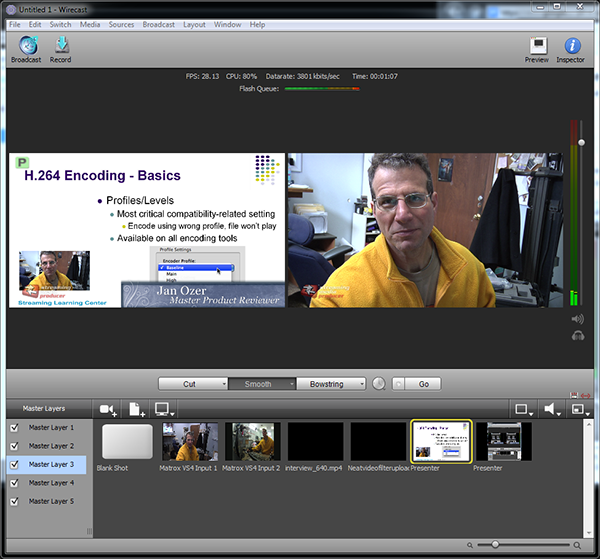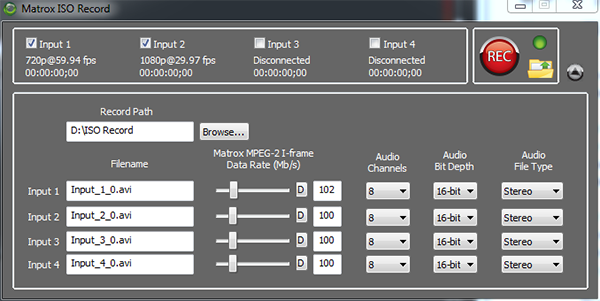Review: Producing Webcasts with Telestream Wirecast and the Matrox VS4
Running Telestream Wirecast with the Matrox VS4, a powerful, well-integrated capture card, handling most of the input/encoding/previewing load, yields impressive results that catapulte Wirecast into the TriCaster/Livestream Studio class of product when it comes to responsiveness.
When it comes to live streaming software, all programs are limited by the capture hardware utilized and the computer that they run on. To ensure that all of your live events come off without a hitch, Telestream, Matrox, and several manufacturers have teamed up to provide multiple turnkey platforms combining Telestream Wirecast and the Matrox VS4. I recently tested two systems from 1 Beyond, and the results were impressive.
As you may know, Wirecast is a live streaming software program with an exceptionally broad feature set, including multiple-camera switching, transitions, titles, the ability to broadcast screen-based sources and file-based videos, live greenscreen to virtual sets, and scoreboard capabilities. Wirecast comes with presets for many live streaming service providers, and can connect with any RTMP-based streaming server as well as Windows Media and QuickTime servers. There are two versions: Wirecast Studio ($495) and Wirecast Pro ($995), and Telestream has a nice features table describing their individual features.
I’ve tested and reviewed Wirecast multiple times, including a review for StreamingMedia.com in April 2010 and produced several live events with the program. But I’ve never used the product with a capture card; usually broadcasting SD output from DV input. For convenience, I always ran the program on notebooks, usually 2-Core machines that were up to the task but clearly not speed burners.
For these reasons, I perceived of Wirecast as functional and well-featured, but not an exceptional performer, primarily because on-screen preview was clearly less than full frame rate. A few minutes with these turnkey systems disabused me of the latter perception, let me tell you that.

Figure 1. Wirecast showing one of the two camera inputs plus screen-based input from another computer on the network with picture-in-picture.
The Matrox VS4
The Matrox VS4 is a single-slot card with 4 HD-SDI BNC inputs that costs around $1,495. Within Wirecast, the board auto-senses the input of your cameras, so you don’t have to configure any settings. You can also mix inputs of different configurations, a nice convenience, and install more than one card in a single system for 8- or 12-camera switching.
The killer feature for some producers will be the ability to record each stream independently to hard disk during the production. That’s in addition to Wirecast’s ability to record an archived stream to disk and send one or more streams to a streaming service provider. Data rates for the ISO streams are adjustable, but you’ll need an SSD drive or RAID configuration to capture more than a single stream on most normal hard drives.

Figure 2. The VS4’s ISO record function can record each stream to disk during the production.
Related Articles
Any time you produce a webinar that's got PowerPoint and a talking-head video, it's helpful to present them in the same video frame. This tutorial explains how to composite these two sources in Telestream Wirecast.
Matrox VS4 not only sends video feeds to Wirecast for streaming, it simultaneously provides ISO recording of all the original video and audio feeds to disk, which is essential for high-quality post-event editing